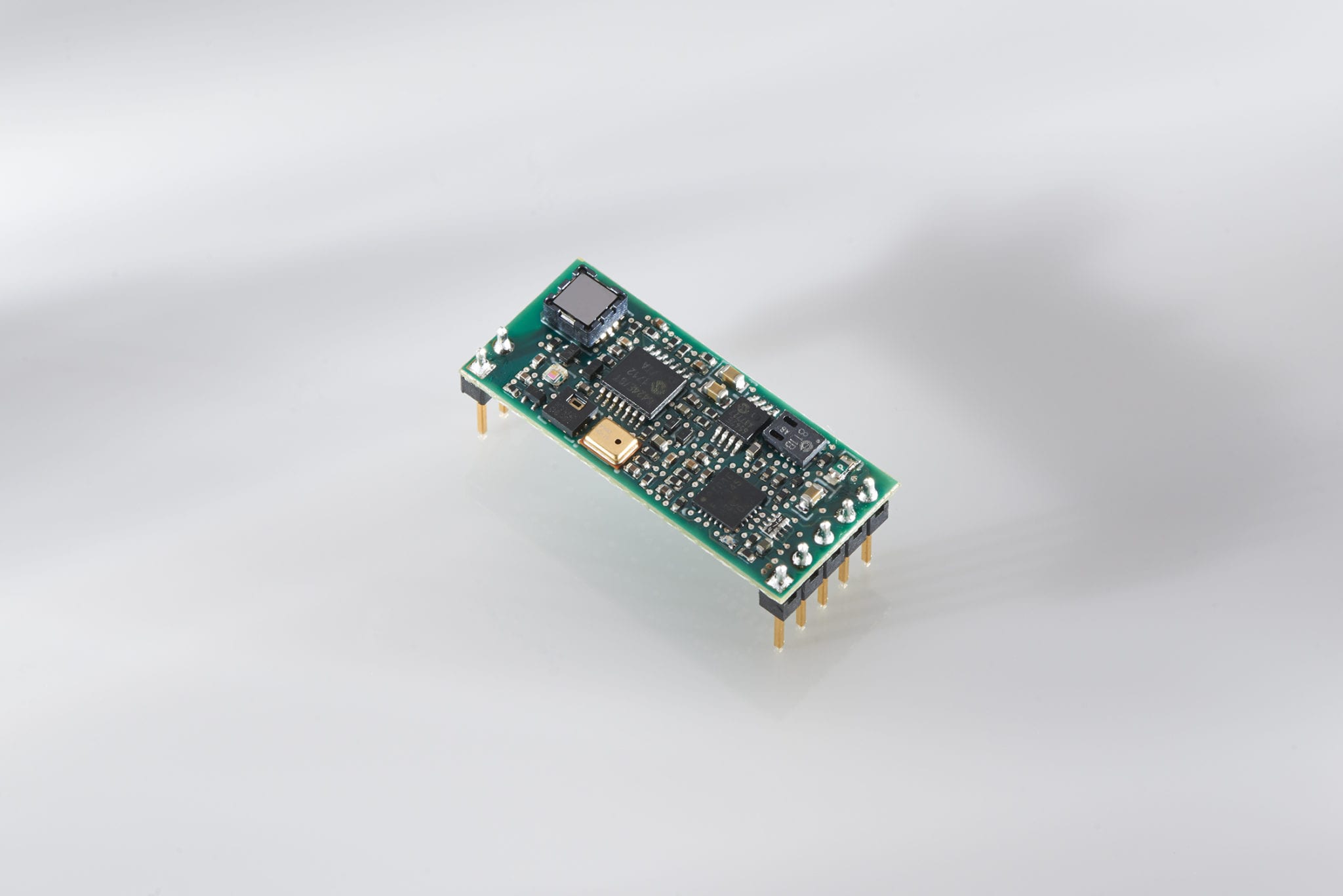 It’s hard for one sensor to provide a comprehensive picture of the world. Take the pressure sensor as an example. In many industrial and automotive processes, there is often a close relationship between pressure and temperature. A reduction in pressure might be symptomatic of a loss of oil in a gearbox. But that might also be caused by a rise in temperature, which indicates there might not be a problem at all, or that the problem is more severe than expected. The rise in temperature may signal excessive friction inside the system that calls for a rapid response by a maintenance crew.
It’s hard for one sensor to provide a comprehensive picture of the world. Take the pressure sensor as an example. In many industrial and automotive processes, there is often a close relationship between pressure and temperature. A reduction in pressure might be symptomatic of a loss of oil in a gearbox. But that might also be caused by a rise in temperature, which indicates there might not be a problem at all, or that the problem is more severe than expected. The rise in temperature may signal excessive friction inside the system that calls for a rapid response by a maintenance crew.
Pressure sensors have moved into many applications, including the consumer space, in designs that illustrate the power of sensor fusion. Having already shown the power of incorporating motion sensors to open up new applications and improve user experience, the manufacturers of smartphones and tablets are looking to add more. Pressure sensors provide the ability to measure altitude. Navigation aids such as the Global Positioning System (GPS) can, using signals from multiple satellites, provide information on height as well as latitude and longitude. The height readings are highly dependent on the number of satellites in view, which cannot be guaranteed in dense urban environments. Instead, the available GPS data can be combined with that supplied by the pressure sensor to improve overall accuracy.
The ability to use multiple sensor signals together also acts as a sanity check on data – letting system software discount temporarily erroneous readings or, better, correct them. For example, the materials used in pressure sensors will expand and contract depending on temperature. Although they are designed to be insensitive to small fluctuations, large excursions in temperature that may be encountered in automotive and industrial systems can affect pressure readings. Temperature measurements let firmware apply correction curves.
Adding humidity and temperature sensing lets the system analyse other environmental factors. The addition of temperature and humidity sensing, for example, makes it possible to calculate the dew points, which has important advantages in building systems that need to control moisture.
Bringing multiple sensors together can broaden the capabilities of building-automation systems. As well as temperature and humidity sensors for core air-conditioning functions, chemical detectors can be added to determine air quality and speed up fresh-air exchange if the load from contaminants exceeds a threshold. Even microphones can play a role. The shattering of glass generally produces a characteristic high-frequency pulse that a microphone can pick up. A sudden change in temperature shortly afterwards will point to a broken window that needs attention.
Multifunction sensors are helping to deal with this demand for expanded functionality. Integrating multiple MEMS-based sensors into the same module often yields a smaller solution overall. They can take advantage of novel 3DIC and system-in-package assembly techniques that consume far less space than separately packaged ICs would on a conventional PCB. The co-packaging can also reduce system cost and optimise materials usage. Once integrated, the sensors can be addressed across the same bus interface, which further helps minimise PCB real estate. The elimination of multiple I2C or SPI connections can also simplify firmware development as well as reducing the number of board traces and microcontroller I/O ports needed.
A less obvious advantage is one of power consumption. The sharing of common functions, including the digital bus controller and data converters, reduces the number of components that need to be powered. Also, transmissions of data to the host microcontroller can be collected and performed in a group, rather than forcing the firmware to individually poll multiple parts. The sensor controller can schedule measurements so that only one sensor is active at any one time, which reduces the amount of burst energy required from a battery. This can optimise battery lifetime.
These advantages have made multifunction sensors more attractive and manufacturers have responded with a range of highly integrated products. Examples include the environmental multifunction sensors manufactured by TE Connectivity, such as the MS5607. Addressed using a common I2C interface, this sensor brings together barometric pressure and air temperature measurements into a single chip-level package – providing the ability to perform compensation of pressure measurements. The MS8607 adds humidity sensing for applications such as dew-point calculation and offers ultra low power consumption.
Many combinations are possible and are now being realised on the market. If you have a need for particular combination of sensors, there is probably a multifunction option out there.
Are you developing a new device or application that requires pressure measurement? Read our design guide on choosing pressure sensors and explore a range of additional pressure sensor resources to help you find the right solution for your design. Alternatively, if you’re ready to take the next step, contact our team of technical specialists who are on hand to discuss your design and assist with product selection.
